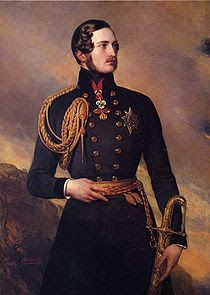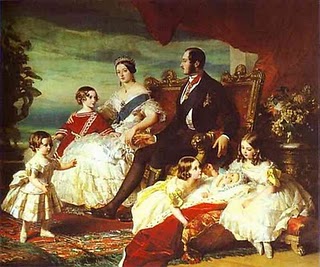from Victoria…
Avebury Stone Circle, Wiltshire

A few days ago I was wandering around the library and I noticed the book
Off The Tourist Trail. I was especially attracted by the name Bill Bryson on the cover. More details on the book and Bryson below. Immediately I grabbed it, as I love to travel but, like most of us, I prefer fewer tourists around than camera-wielding hordes.

Avebury vs. Stonehenge is their recommendation for a more leisurely visit to a great megalithic site. Stonehenge might be more famous, the book says, but it is fenced, crowded with tour buses, much smaller in size, and you can’t get close to the stones. In Avebury, you can walk among the stones, touch them and even pet the sheep.
Here is a lovely short film about Avebury.
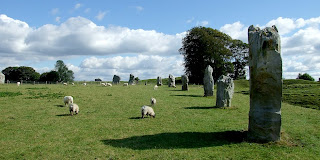
I have visited Avebury several times and I definitely agree. You can really get the gist of Stonehenge from pictures or driving by, but to experience the great thrill of standing next to a 5,000-year-old sacred stone, Avebury excels. It is about 20 miles north of Stonehenge.
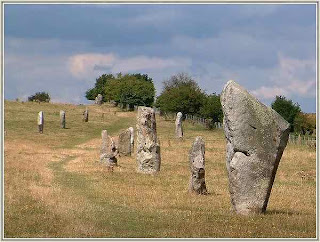
There are many places to park and get out to hike around. Be sure to wear walking shoes as you will want to cover a lot of territory. In the center of the circle, give or take a bit, there is a village and manor house run by the
National Trust. There are some interesting displays in the outbuildings about the history of Avebury, the stone circle, the farm and the village. The Red Lion pub is a good spot for relaxation.

The manor house dates from the 16th century. Sometime in the middle ages, most of the stones were either removed or buried due to the pagan associations they suggested to superstitious residents. The entire site was re-discovered in the 1930’s, the stones dug and stood up once more. Continuing studies reveal more and more information about the area.
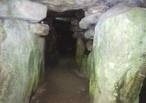
The Stone Circle at Avebury dates from about 2500 BC and must have been built for religious and ceremonial purposes. Nearby is the conical Silbury Hill which is manmade but still mostly unexcavated. Various technological processes will enable more and more of it to be explored without endangering its internal construction as time goes by. Silbury Hill is the largest prehistoric earthwork in all of Europe. Nearby are also several Long Barrows, (above, left) burial sites, some of which can be entered, though when I was there, I found a pile of trash left by previous visitors. Shame!
The fine museum at Avebury contains many bronze weapons and items of jewelry from ancient times found in this neighborhood. Silbury Hill, below.

By all means, go drive by Stonehenge, but plan on spending most of the day at Avebury, just a half hour’s drive away. Stonehenge, below, without the fences.


Now back to Bill Bryson. I have read that he has moved back to England since his book,
Notes from a Small Island, was written. But at the time it was published in 1995, he had moved to the U.S. after several years in Britain. It is a humorous homage to the UK and its culture and well worth reading. In fact, everything Bryson writes is excellent! Go Bill!

We hope you enjoy living in Britain. In fact, we are really envious.

_before_1869.jpg)





















